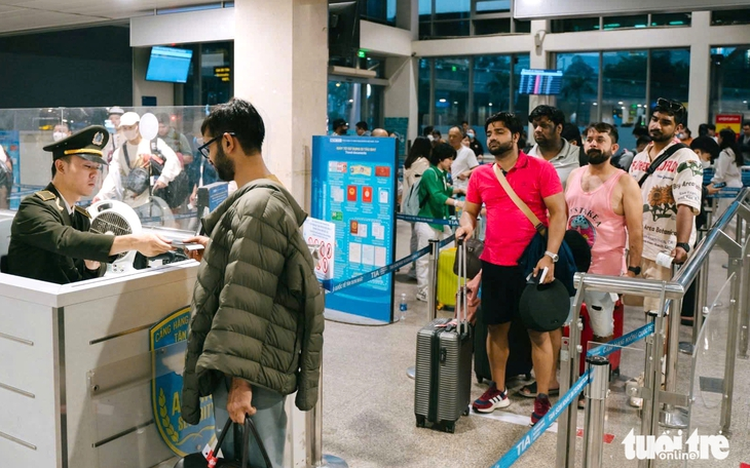
Passengers complete check-in procedures at a Vietnamese airport. Photo: Thanh Hiep / Tuoi Tre
In the 2025 Whitebook, EuroCham identified five long-standing bottlenecks that have hindered European businesses from doing business and expanding investment in Vietnam, including entry visa policy, immigration procedures and transportation infrastructure at airports, work permits, VAT refunds, and customs procedures.
EuroCham appreciated the Vietnamese government’s efforts in granting visa exemptions to citizens of 16 countries for stays of up to 45 days, a move that has significantly boosted tourism and business travel.
However, Vietnam still lags behind regional competitors like Thailand and Malaysia, highlighting the need for further visa policy improvements to strengthen its competitiveness.
Vietnam should implement a tiered visa system, including long-term visas for retirees and digital nomads; expand visa waivers to the full EU, Australia, and New Zealand; invest in digital infrastructure for seamless e-visa processing; and explore regional initiatives like a Southeast Asia common visa to enhance connectivity.
EuroCham also advised Vietnam to implement e-gates, increase immigration staff, and introduce priority lanes for investors, MICE participants, families, and elderly travelers to streamline immigration procedures and reduce wait times.
The country should also improve airport traffic flow with auto-pay lanes, dedicated passing lanes, and better public transport links.
Strengthening airport infrastructure will enhance Vietnam’s tourism appeal, help the nation attract new investments, and improve its global competitiveness, EuroCham claimed.
Many foreign-invested enterprises in Vietnam struggle with timely VAT refunds, impacting cash flow and operations.
Delays arise from unclear regulations, lengthy invoice verification, and extensive documentation, particularly for construction and export-related refunds.
According to EuroCham, Vietnam faces significant challenges in customs practices that hinder efficient trade and investment flows.
Key issues include importers struggling with proper preferential tariff declarations due to varied procedures, resulting in penalties for errors.
Customs authorities' use of internal reference databases for valuation creates disputes when importers cannot justify price differences, undermining trust in the process.
It is essential to pay careful attention to the on-spot import and export system which has created valuable competitive advantages by allowing international trade between domestic enterprises.
This mechanism increases 'made in Vietnam' localization rates without physically importing materials from abroad, reducing logistics costs, shortening delivery times, and attracting foreign investment.
Despite these benefits, the Ministry of Finance has proposed abolishing on-spot import/export procedures, apparently prioritizing customs management concerns over economic advantages.
Eliminating this policy would increase manufacturing input costs, extend shipping times, and reduce Vietnam's competitiveness as an investment destination.


Max: 1500 characters
There are no comments yet. Be the first to comment.